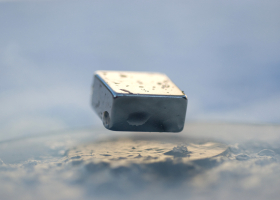The MajuLab International Research Laboratory (IRL) has its origins in the International Associated Laboratory "France Singapore Quantum Physics and Information Lab" (FSQL). The latter was created in January 2010 to provide a formalized framework for ongoing scientific collaboration between France and Singapore that followed from an International Scientific Cooperation Project (PICS), which ran from 2007 to 2010. In May 2014, the IRL MajuLab was created by the CNRS, Université Nice Sophia Antipolis, Sorbonne University / Pierre and Marie Curie University, the National University of Singapore and the Nanyang Technological University. MajuLab's research involves theoretical and experimental work covering many fields, such as quantum information and engineering, ultra-cold quantum gases, quantum matter, quantum photonics and materials chemistry and its applications to nanosciences. In 2018, the CNRS and its historical partners signed a new agreement for MajuLab which marks the birth of two mirror sites for this IRL in France, one at the Université Nice Sophia Antipolis and the other at Sorbonne University.
